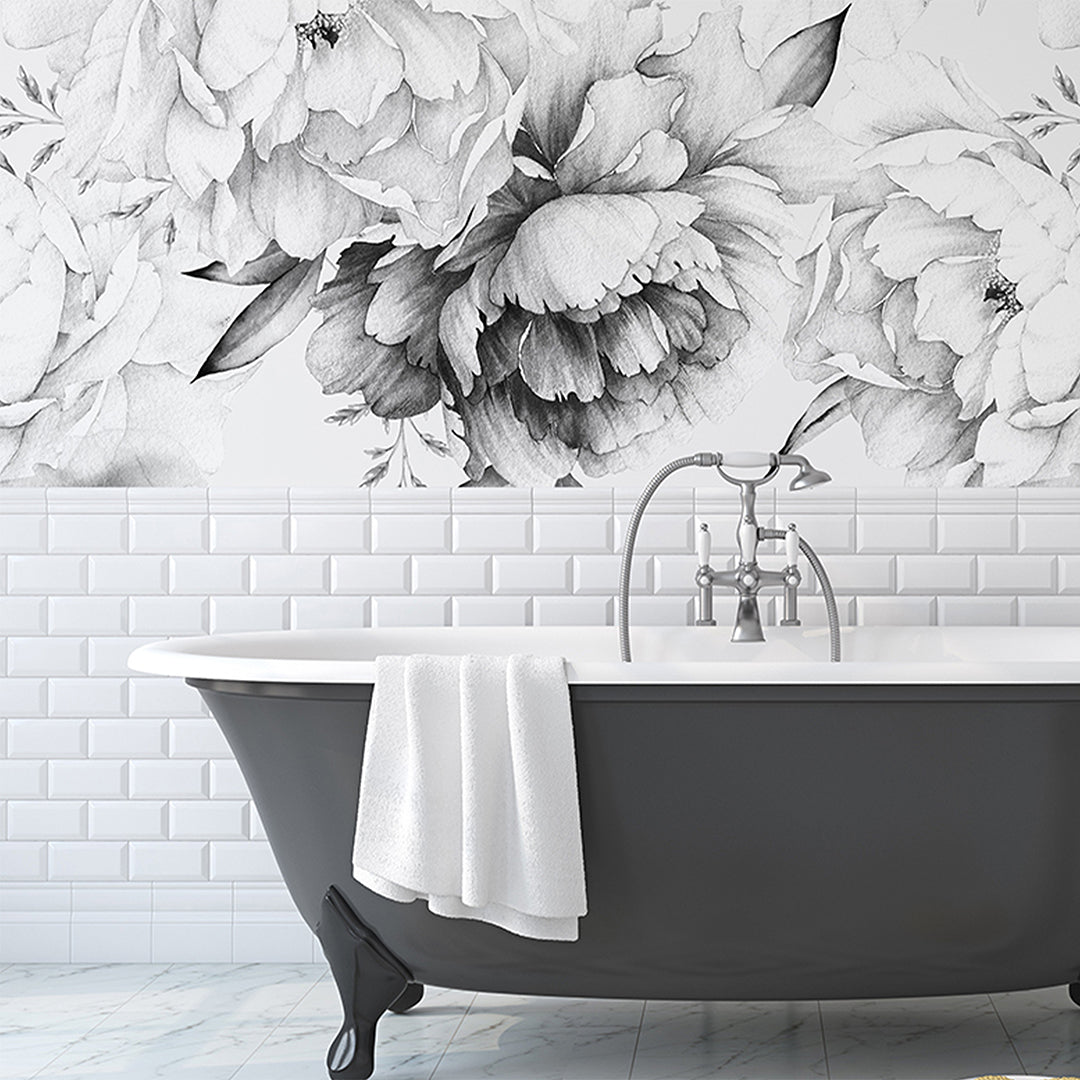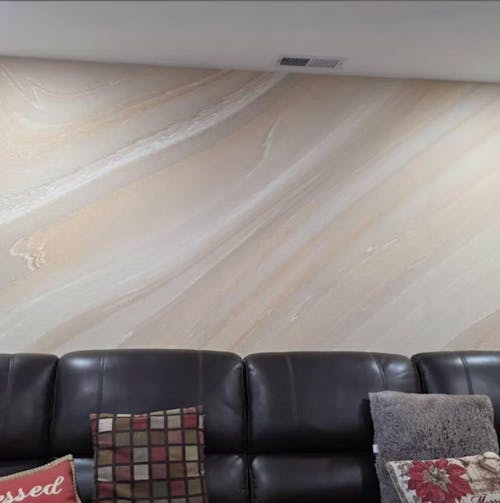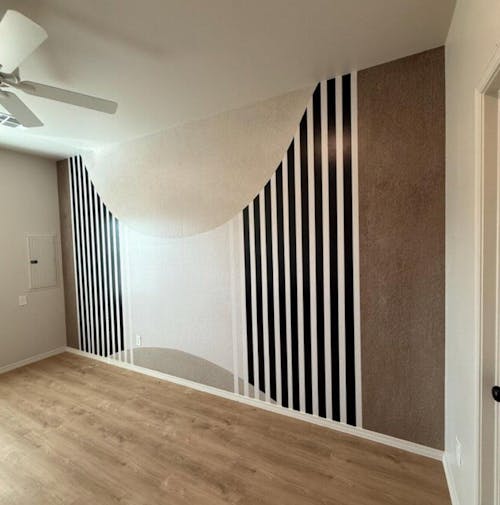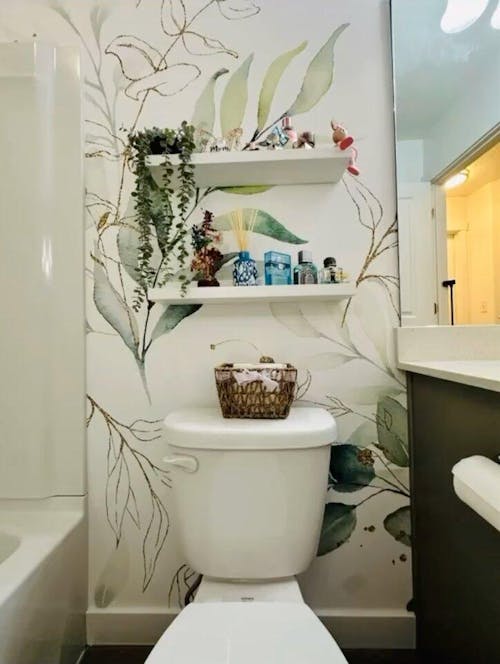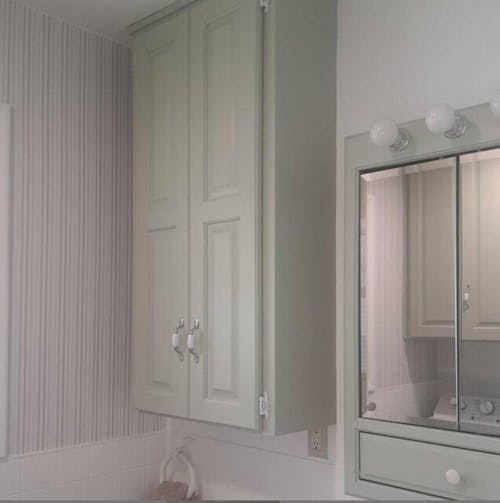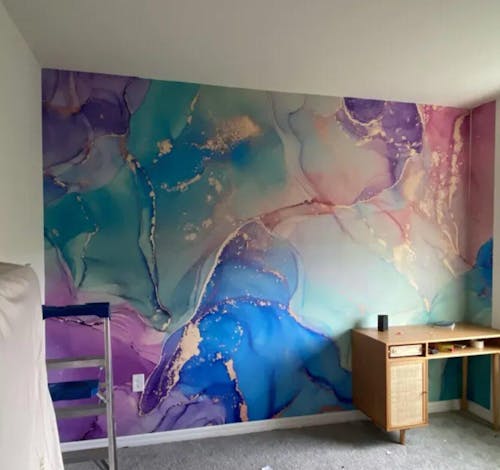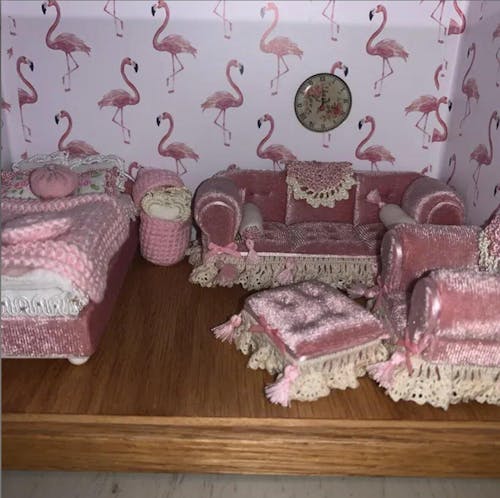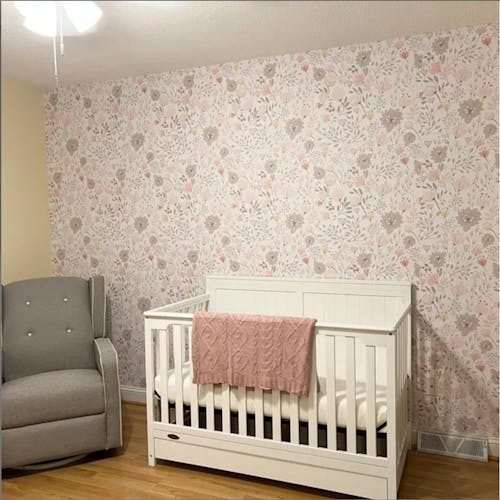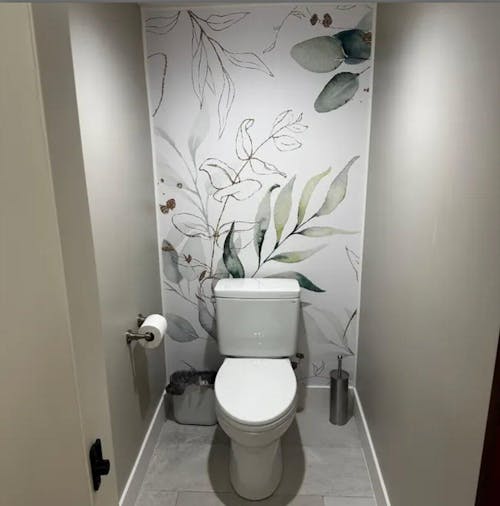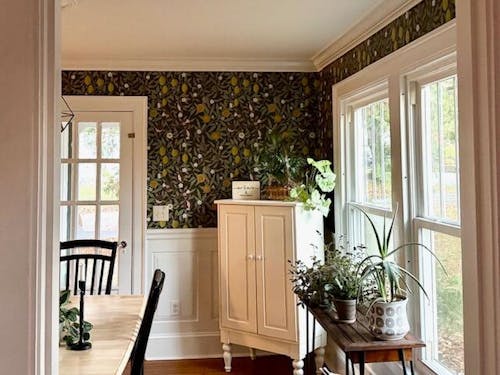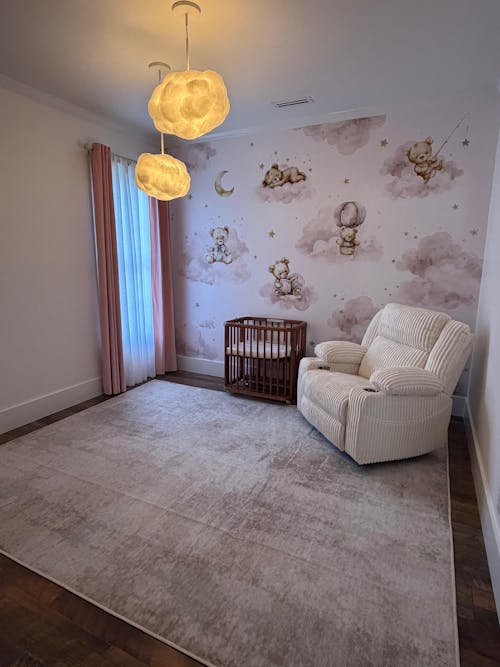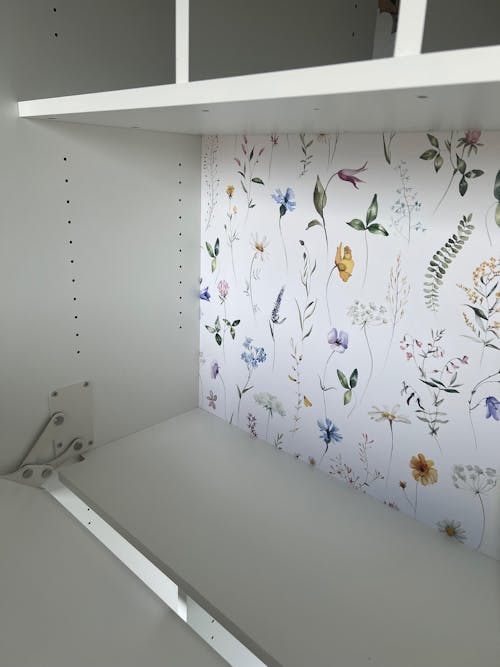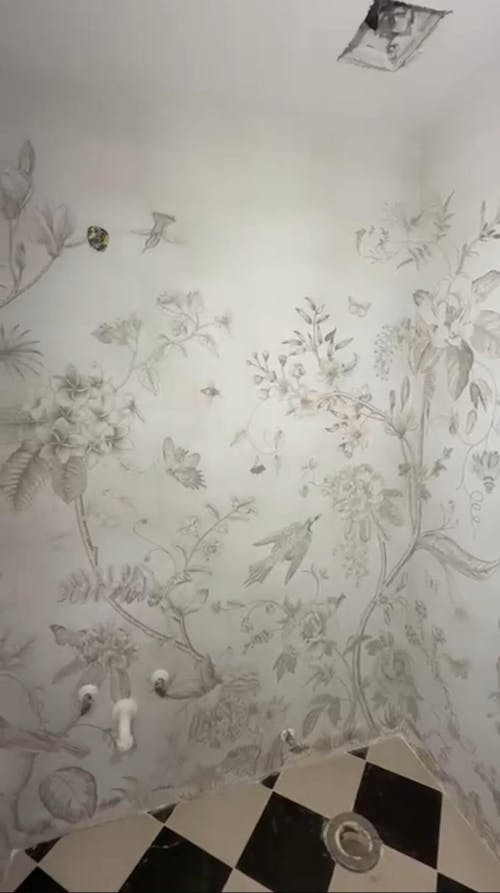Adding peel-and-stick wallpaper to a bathroom is one of the easiest ways to transform a plain space into something stylish and unique. But bathrooms are tricky environments — heat, steam, and moisture can quickly lead to wallpaper peeling, bubbling, or staining if not handled properly.
To help you avoid disappointment, here are the top 5 bathroom wallpaper mistakes — and how to avoid them for a long-lasting, beautiful result.
1. Applying Wallpaper on Unprepared or Damp Walls
The biggest (and most common) mistake people make is applying wallpaper directly onto wet or poorly prepared surfaces. Even slight dampness or soap residue can prevent the adhesive from sticking properly, causing the wallpaper to bubble or fall off after a few days.
How to avoid it:
- Clean the wall thoroughly with a mild detergent and let it dry for at least 24 hours.
- Use a lint-free cloth to wipe off any dust or debris.
- Make sure the wall is completely dry — no humidity, no condensation.
Never apply wallpaper immediately after a hot shower — give your bathroom time to fully air out.
2. Choosing the Wrong Type of Wallpaper
Not all wallpapers are created equal. Many people make the mistake of using traditional paper-based designs that aren't meant for humid areas. Regular wallpaper absorbs moisture, which leads to peeling, warping, or mold growth.
How to avoid it:
- Choose peel and stick wallpaper for bathrooms that is labeled as moisture-resistant or specifically safe for humid spaces.
- Look for vinyl-based or laminated materials that repel water.
- Avoid paper-only wallpapers in bathrooms, especially near showers or sinks.
Faux tile or marble peel-and-stick wallpapers are great bathroom wall covering ideas that combine style and durability.
3. Ignoring High-Moisture Zones (Like Showers)
Even the best bathroom wallpaper can fail if installed directly inside the shower or where it gets regular splashes. Constant water exposure breaks down the adhesive and leads to moisture damage and peeling edges.
How to avoid it:
- Install wallpaper away from direct water contact — think above a sink backsplash or behind a toilet.
- For shower walls or tub surrounds, opt for tile or waterproof panels instead.
- Use caulk or clear sealant around the edges if needed to create a moisture barrier.
4. Skipping the Ventilation Step
Bathrooms without proper ventilation are a nightmare for wallpapers. Excess steam from hot showers can cause wallpaper to bubble, loosen, or even grow mold behind it.
How to avoid it:
- Use an exhaust fan or keep the window open to reduce humidity after showers.
- Install a small dehumidifier if your bathroom retains moisture.
- Make sure wallpapered areas can dry quickly — airflow is key!
Even the best-quality wallpaper in the bathroom will fail without adequate airflow.
5. Not Sealing or Protecting the Wallpaper
A common oversight is assuming peel-and-stick wallpaper is totally waterproof — it's often moisture-resistant, not waterproof. Without extra protection, even steam can slowly compromise the adhesive over time.
How to avoid it:
- Use a clear, matte polyurethane coating to seal your wallpaper in splash-prone areas.
- Apply a transparent wallpaper sealer (available in most hardware stores) for added moisture protection.
- Gently wipe wallpaper dry if water does come into contact with it.
Bonus Tip: Always Test a Sample First
Before applying full sheets, it’s smart to test a sample in your bathroom to see how it responds to moisture, humidity, and steam over several days. This allows you to assess adhesion strength, color fastness, and texture changes without risking a full wall.
Final Thoughts
Bathroom wallpaper mistakes are easy to make but just as easy to prevent. With the right preparation, materials, and care, peel and stick wallpaper for bathrooms can be a stunning, long-lasting upgrade that adds charm and personality to your space.
Explore our collection of peel and stick wallpaper for bathroom or contact our design experts for personalized help choosing the best option for your bathroom.
